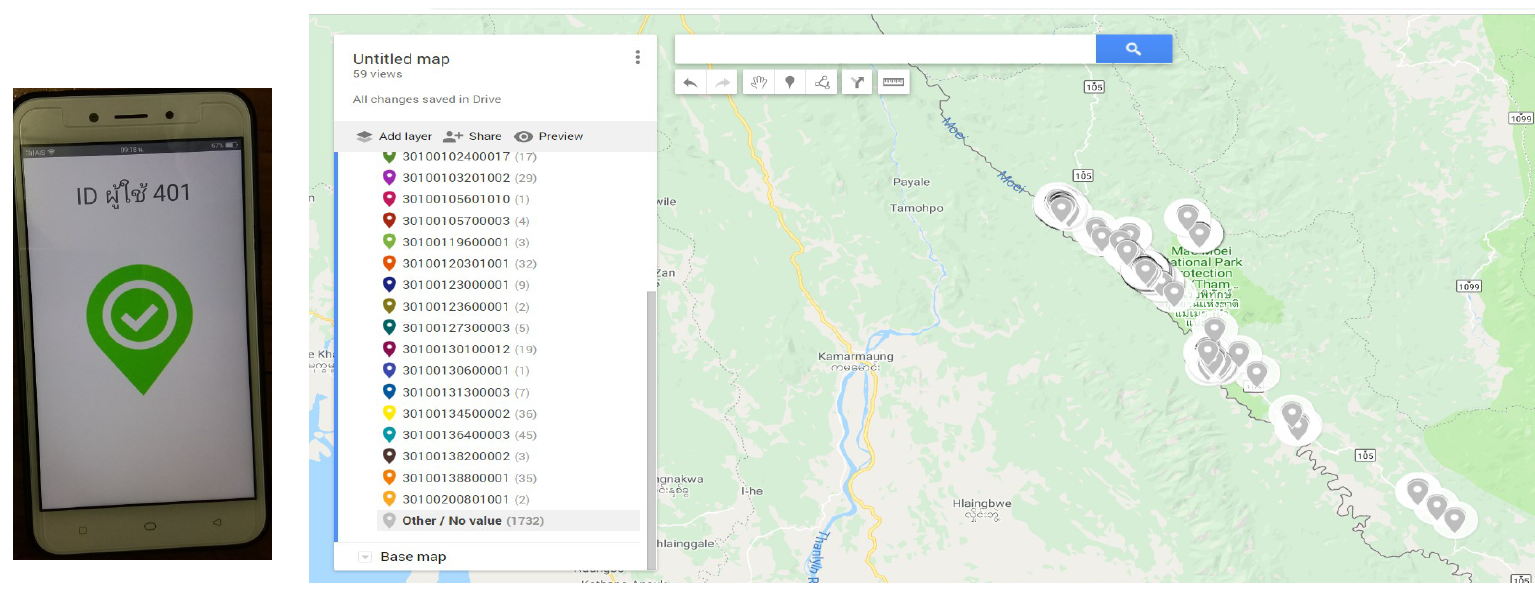Understanding the Role of Human Mobility in Malaria Transmission
In low transmission settings, it is believed that human migration plays a major role in malaria transmission and even in the emergence of drug resistance. Malaria infections may show up in low incidence areas because people become infected during the time spent in high-risk areas. In the case of northern Thailand, mobility may be due to normal daily patterns, labor migration, and seeking of refuge. It is known that a significant factor in malaria transmission in Thailand along the border with Myanmar is due to cross border migration, largely due to seeking of labor. While attempts have been made to understand movement patterns through systematic interviews, answers depend on the subject’s memory and thus the data may not be accurate and precise. In addition, the approach is too labor intensive to practically collect data from large groups. A more precise approach is to use a GPS device to collect mobility data. This provides not only locations visited but also precise durations spent and time of day, which is important in mosquito biting behavior.
In this project we have developed a smartphone app to track users’ location at regular intervals. Since some rural locations do not have 3G coverage, the app is designed so that it can store location information and transmits once the phone as a 3G or wifi connection. Other requirements are that it consumes as little power as possible and retains data even if the phone is switched off. The app has been installed in the phones of approximately 150 of the participants in the SEA-ICEMR study in Tak province, with location data being gathered every hour over the course of one year. An ID on the phone will link the data to the subject’s health record. Analytical software will be developed to understand the relation between mobility patterns and malaria infection. We expect to be able to use the data from this cohort to identify high-risk geographic areas, to validate risk estimates based on other data, and to trace back to identify possible locations where transmission occurred in individuals. This will ultimately assist in establishing more effective malaria control strategies.
PIs: Dr. Thomas Barkowsky, Faculty of Informatics, Univ of Bremen; Prof. Dr. Peter Haddawy, Faculty of ICT, Mahidol University
Project Members
- Prof. Dr. Saranath Lawpoolsri, Faculty of Tropical Medicine, Mahidol University
- Amnat Khamsiriwatchara, Center of Excellence for Biomedical and Public Health Informatics (BIOPHICS), Faculty of Tropical Medicine, Mahidol University
- Prof. Dr. Jaranit Kaewkungwal, Center of Excellence for Biomedical and Public Health Informatics (BIOPHICS), Faculty of Tropical Medicine, Mahidol University
- Patiwat Sa-angchai, Faculty of Tropical Medicine, Mahidol University
- Dr. Myat Su Yin, Faculty of ICT, Mahidol University
- Dr. Anna Förster, Faculty of Electrical Engineering, Univ of Bremen
Duration: Jan 2019 - ongoing

